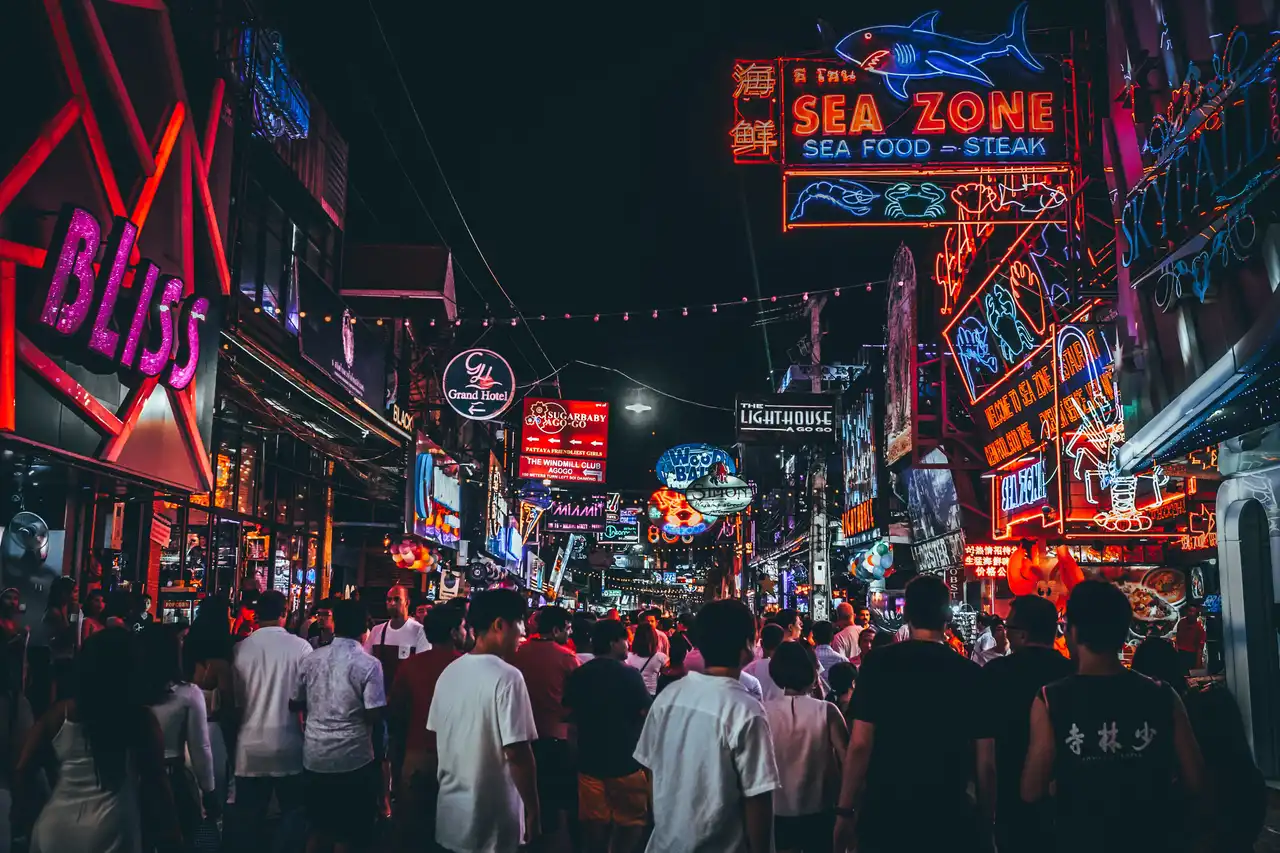Romania is a country with a rich tapestry of history, culture, and natural beauty. From captivating castles and medieval citadels to stunning landscapes and vibrant cities, there is something for every traveler. Here are the top 10 places in Romania that should be on your must-visit list:
1. Bran Castle (Dracula’s Castle)
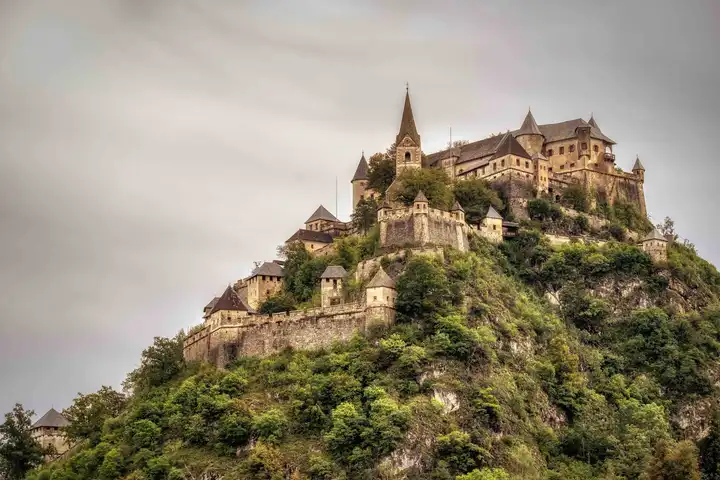
Bran Castle, famously known as Dracula’s Castle, is a captivating Gothic fortress perched on a hill near Brasov, Romania. With its imposing towers, narrow corridors, and eerie atmosphere, it offers a fascinating journey into Romania’s rich history and the allure of the supernatural.
Constructed in the 14th century as a strategic defense fortress, Bran Castle has undergone various transformations, serving as a military stronghold, customs point, and eventually becoming a royal residence. It became forever intertwined with the myth of Dracula through Bram Stoker’s famous novel.
Inside, the castle reveals a labyrinth of rooms where visitors can explore medieval furniture, ancient weaponry, and captivating artifacts. The castle’s atmospheric rooms and stunning mountain vistas provide an immersive experience that captivates the imagination.
Bran Castle, with its compelling history, breathtaking architecture, and association with the world of Dracula, remains an enduring symbol of Romania’s enchantment. It continues to fascinate visitors from all over the world, inviting them to uncover the secrets held within its walls and immerse themselves in the timeless legends that have shaped its legacy.
To reach Bran Castle, one can embark on a scenic journey from Brasov. Tickets can be purchased on-site, allowing visitors to experience the castle’s atmosphere and delve into its haunting history. Whether driven by a fascination with vampires or an interest in medieval history, a visit to Bran Castle is an unforgettable experience. Additional information can be found on the official website at bran-castle.com.
2. Peles Castle
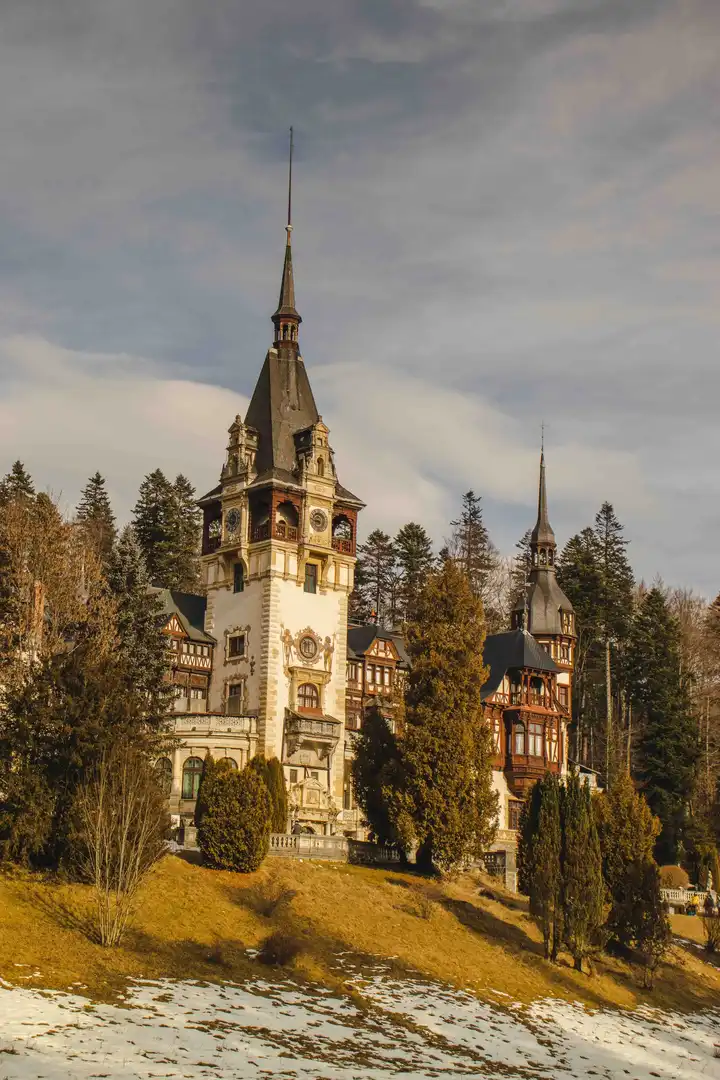
Nestled in the scenic town of Sinaia, Romania, Peles Castle stands as a masterpiece of Neo-Renaissance architecture and a symbol of opulence and grandeur. This enchanting royal residence, once a summer retreat for the Romanian royal family, offers visitors a glimpse into a bygone era and an unforgettable experience amidst breathtaking natural beauty.
As you approach Peles Castle, its fairytale-like facade emerges from the lush surrounding forests, evoking a sense of wonder and anticipation. The castle’s stunning exterior features intricate detailing, elegant turrets, and charming balconies adorned with decorative motifs. Every element of its design showcases the artistic craftsmanship of the time.
Stepping inside Peles Castle is like stepping into a lavish dream. The interior transports visitors to a world of luxury, with each room meticulously adorned with exquisite woodcarvings, ornate chandeliers, and sumptuous tapestries. The castle boasts over 160 opulent rooms, including a stunning Concert Hall, a breathtaking Council Room, and a remarkable Turkish parlor. Each room reflects a different architectural style, from Renaissance to Baroque and Gothic Revival, leaving visitors in awe of the diversity and richness of the castle’s design.
Surrounding Peles Castle are meticulously manicured gardens, featuring terraces, fountains, and vibrant flower beds. The picturesque landscape perfectly complements the castle’s beauty, creating an idyllic setting that invites visitors to explore and soak in the tranquil ambiance.
To visit Peles Castle, one can take a train or drive from Bucharest, allowing for a scenic journey through the Carpathian Mountains. Tickets can be purchased on-site, granting access to various tour options that delve into the castle’s history and provide insights into the lives of the Romanian royal family.
Beyond the castle itself, the town of Sinaia offers a charming setting for further exploration. Visitors can stroll along the town’s tree-lined streets, browse local shops for souvenirs, and indulge in traditional Romanian cuisine at cozy restaurants. Additionally, the nearby Bucegi Mountains provide opportunities for outdoor activities such as hiking, mountain biking, and skiing during the winter months.
Peles Castle stands as a testament to Romania’s architectural heritage and offers a glimpse into a world of grandeur and refinement. Its striking beauty, combined with the surrounding natural splendor, creates an enchanting experience that captivates visitors from around the globe. A visit to Peles Castle is not only a journey into the past but also a journey into a fairytale retreat that will leave an indelible mark on the hearts and minds of all who enter its majestic halls. More details can be found at peles.ro.
3. Sighisoara
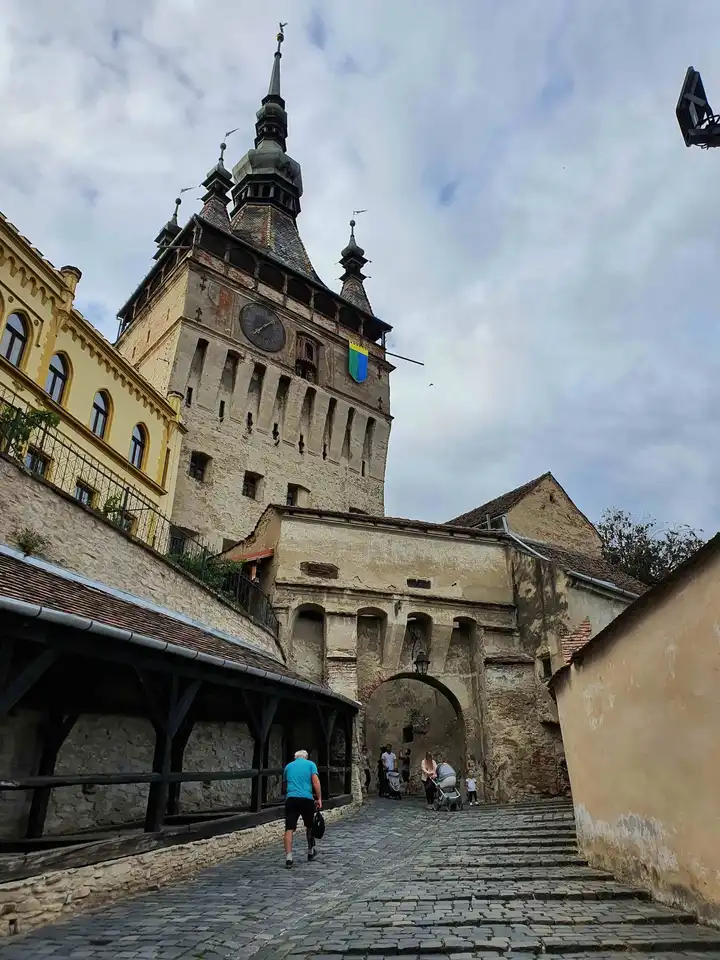
In the heart of Transylvania, Romania, lies the captivating town of Sighisoara, a UNESCO World Heritage Site and a living testament to the region’s medieval history. Stepping into Sighisoara is like stepping into a time capsule, where cobblestone streets, colorful houses, and an imposing Clock Tower transport visitors back to a bygone era.
As you approach Sighisoara’s fortified walls, the town’s enchanting atmosphere becomes apparent. The medieval citadel, perched on a hill overlooking the Tarnava Mare River, stands as a well-preserved example of a 16th-century European fortified town. Its 14 towers, including the iconic Clock Tower, provide a visual feast and serve as a reminder of Sighisoara’s historical significance.
The heart of Sighisoara is its beautifully preserved Old Town, a maze of narrow streets lined with pastel-colored houses adorned with ornate gables and traditional signs. Wandering through the town’s picturesque lanes, visitors can admire the architectural charm of the buildings, many of which date back to the 16th and 17th centuries.
One of the highlights of a visit to Sighisoara is ascending the 175 steps of the Clock Tower. At the top, a panoramic view of the town unfolds, offering a breathtaking vista of the red rooftops, the surrounding countryside, and the distant Carpathian Mountains. Inside the tower, the Museum of History awaits, providing fascinating insights into Sighisoara’s past and the life of its inhabitants.
Sighisoara is not only a place of architectural marvel but also a town steeped in legends and history. It is known as the birthplace of Vlad the Impaler, the inspiration behind Bram Stoker’s fictional character, Count Dracula. The historic house where Vlad was born is now a museum that allows visitors to delve into the life and times of this enigmatic figure.
To reach Sighisoara, one can easily travel by train or bus from major cities in Romania. Once within the town, no entrance tickets are required to explore the citadel and its attractions, allowing visitors to meander through the cobblestone streets at their own pace and soak in the medieval ambiance.
Throughout the year, Sighisoara comes alive with cultural events and festivals that celebrate its rich heritage. One such event is the Medieval Festival held in July, where the streets are transformed into a lively stage for reenactments, parades, and traditional performances. This immersive experience offers visitors the chance to witness the town’s medieval spirit come alive.
Sighisoara’s charm extends beyond its fortified walls. Exploring the surrounding countryside reveals picturesque landscapes, traditional villages, and the opportunity to immerse oneself in Transylvania’s rural lifestyle. It is a region known for its scenic beauty, with rolling hills, fortified churches, and idyllic landscapes that invite visitors to explore and appreciate the simplicity of rural life.
Sighisoara stands as a beacon of Transylvania’s medieval past, inviting visitors to step back in time and immerse themselves in a world of cobblestone streets, colorful houses, and fascinating history. It is a destination that ignites the imagination and captivates the senses, leaving an indelible mark on all who have the privilege of experiencing its timeless charm.
4. Bucharest
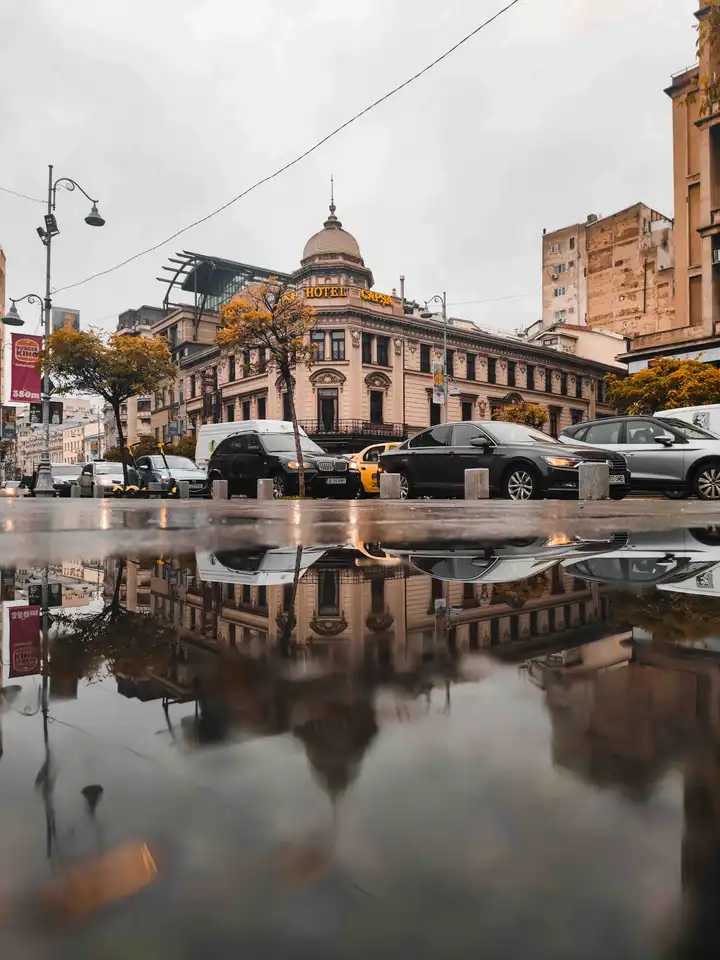
Bucharest, Romania’s dynamic capital, is a city of intriguing contrasts where old-world charm meets modern vibrancy. With its grand boulevards, impressive architecture, and rich cultural heritage, Bucharest offers a captivating blend of history, art, and lively urban experiences.
One cannot help but be captivated by the city’s architectural marvels. The monumental Palace of the Parliament, a gargantuan communist-era structure, astounds visitors with its sheer size and opulence. Bucharest’s Old Town, on the other hand, transports visitors to a different era with its narrow cobblestone streets, quaint buildings, and bustling cafes. Here, you can wander amidst historic churches, visit charming shops, and immerse yourself in the city’s vibrant atmosphere.
The city’s cultural scene is equally enticing. Bucharest boasts a wealth of museums, theaters, and galleries that showcase Romania’s artistic heritage. The National Museum of Art of Romania houses an extensive collection of European art, while the Village Museum offers a fascinating glimpse into traditional Romanian village life. The Athenaeum, an iconic concert hall, is a must-visit for music enthusiasts, with its stunning architecture and renowned performances.
Bucharest’s parks and green spaces provide a welcome respite from the city’s hustle and bustle. Herăstrău Park, the city’s largest park surrounding a picturesque lake, offers a serene escape with its walking paths, boating opportunities, and outdoor cafes. Cismigiu Gardens, located in the city center, is a tranquil oasis where visitors can stroll among fragrant flowers, relax by the lake, or enjoy a picnic.
The city’s nightlife is vibrant and diverse, catering to all tastes and preferences. From trendy rooftop bars and chic clubs to traditional taverns and live music venues, Bucharest offers a vibrant and eclectic nightlife scene that keeps the city buzzing until the early hours.
Reaching Bucharest is convenient, as it is well-connected by international flights and has a reliable public transportation network. The city’s metro system, buses, and trams make it easy to navigate and explore its various neighborhoods and attractions.
In terms of accommodations, Bucharest offers a range of options to suit every budget and preference. From luxury hotels with world-class amenities to cozy boutique accommodations and budget-friendly hostels, there is something for every traveler.
Bucharest’s ever-evolving nature ensures there is always something new to discover and experience. Whether you’re exploring its historical landmarks, indulging in its vibrant cultural scene, or simply savoring the local cuisine at traditional restaurants, Bucharest promises an exciting and unforgettable journey through Romania’s vibrant capital.
Note: It’s always a good idea to check for the latest information and opening hours of attractions and venues before planning your visit to Bucharest. Free Research Preview. ChatGPT may produce inaccurate information about people, places, or facts. ChatGPT May 24 Version
5. The Painted Churches of Maramures
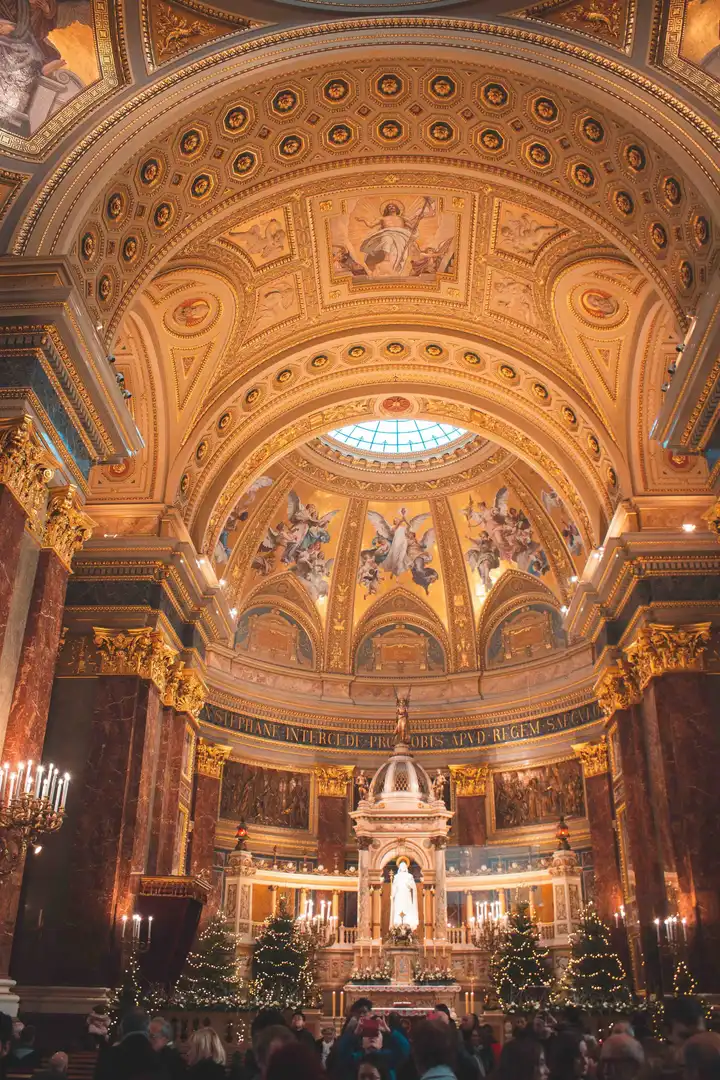
The Painted Churches of Maramures, a collection of UNESCO-listed wooden churches, are a true testament to the artistic and spiritual heritage of Romania. Nestled in the picturesque region of Maramures, these remarkable religious sites offer a journey through time and a glimpse into the rich cultural traditions of the area.
Stepping inside these centuries-old churches, visitors are immediately struck by the vibrant and intricate frescoes adorning the interior walls. The paintings depict biblical scenes, saints, and local folklore, showcasing the unique craftsmanship and artistic expression of the region. The masterful use of colors, the attention to detail, and the preservation of these paintings over the years are a testament to the devotion and skill of the craftsmen who created them.
Each church has its own distinct charm and historical significance. The Church of the Holy Archangels in Ieud, for example, is one of the oldest wooden churches in Maramures, dating back to the 14th century. Its interior is adorned with stunning frescoes that depict scenes from the Bible and local legends. The Church of the Nativity of the Virgin Mary in Budesti stands out for its tall spire and beautifully preserved interior paintings, while the Church of the Holy Paraskeva in Desesti is known for its vibrant frescoes and intricate woodcarvings.
Beyond their artistic value, the painted churches also hold great cultural and spiritual importance for the local community. They serve as places of worship and pilgrimage, where religious ceremonies and traditions are still practiced today. Visitors have the opportunity to witness the locals’ deep connection to their heritage and experience the spiritual ambiance of these sacred spaces.
To fully appreciate the Painted Churches of Maramures, it is recommended to immerse oneself in the local festivals and celebrations. One such event is the Festival of the Merry Cemetery in the village of Sapanta, known for its vibrant painted tombstones and lively atmosphere. During this festival, visitors can witness traditional music and dance performances, learn about the local customs and folklore, and indulge in authentic Maramures cuisine.
To explore the Painted Churches of Maramures, organized tours are available, providing insights into the historical and cultural significance of each site. Alternatively, independent travelers can rent a car to navigate the scenic roads of Maramures and visit these churches at their own pace.
The Painted Churches of Maramures offer a unique and enchanting experience, where art, history, and spirituality converge. They provide a glimpse into the rich cultural heritage of Romania and leave visitors in awe of the craftsmanship and devotion that went into creating these masterpieces. A visit to these extraordinary churches is a journey that transcends time and connects us to the profound beauty of human creativity and faith.
To visit the Painted Churches of Maramures, no entrance tickets or fees are required. These churches are open to the public, However, it’s important to note that some of the churches may have restricted access during religious ceremonies or services. It’s advisable to check the local schedules or inquire at the respective churches if you have any specific timing preferences or if you’re planning a visit during religious holidays.
6. Transylvania
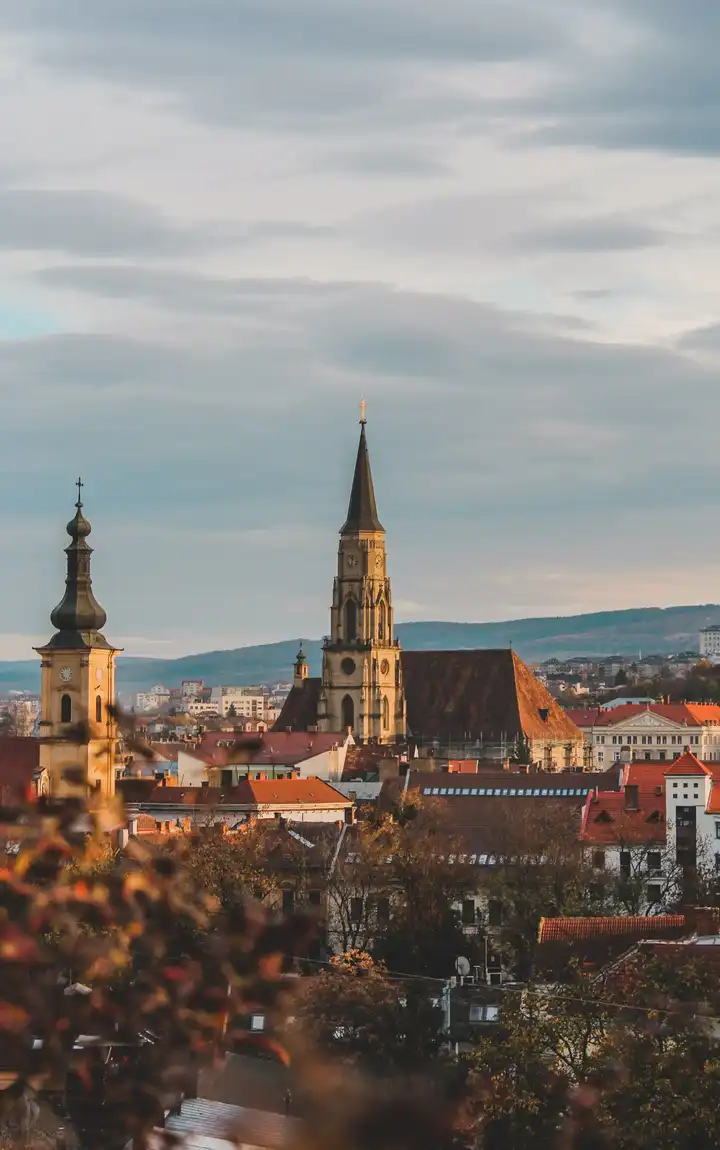
Nestled within the captivating embrace of the Carpathian Mountains, Transylvania beckons visitors with its mystical landscapes, medieval charm, and centuries-old folklore. This enchanting region in Romania is a land of breathtaking beauty and cultural treasures that continue to captivate the imagination of travelers from around the world.
The name Transylvania evokes images of Gothic castles, fortified churches, and picturesque villages nestled amidst rolling hills. This land of legends and folklore has inspired countless stories, most notably that of Bram Stoker’s Dracula. However, Transylvania offers so much more than fictional vampires; it is a destination brimming with history, natural wonders, and vibrant traditions.
Hikers and nature enthusiasts are drawn to Transylvania’s pristine landscapes and the awe-inspiring Carpathian Mountains. The region offers a multitude of hiking trails that wind through dense forests, alpine meadows, and cascading waterfalls. The breathtaking views from the mountain peaks, such as the iconic Bucegi or Fagaras Mountains, reward adventurers with panoramas that are truly unforgettable.
Transylvania’s medieval towns and citadels transport visitors back in time. Explore the fortified churches of Biertan, Prejmer, or Viscri, each bearing the scars of past battles and serving as reminders of Transylvania’s tumultuous history. Wander through the cobbled streets of Sibiu, a city brimming with medieval charm and vibrant cultural festivals. Uncover the secrets of Brasov’s Old Town, where Gothic spires and Baroque facades coexist harmoniously.
Delving into Transylvania’s folklore and traditions is an integral part of the experience. Attending lively festivals, such as the Festival of Medieval Arts in Sighisoara or the Hora de la Prislop in the Apuseni Mountains, immerses visitors in traditional music, dance, and crafts. Sample local delicacies at colorful markets, where artisans showcase their handcrafted products, and savor the region’s renowned cuisine, with hearty dishes like sarmale (stuffed cabbage rolls) and palinca (plum brandy).
Transylvania’s accessibility makes it an inviting destination for travelers. Major cities such as Cluj-Napoca, Sibiu, and Brasov are well-connected by train, and several tour operators offer guided trips to popular attractions. Alternatively, renting a car allows for a more flexible and immersive experience, as it allows visitors to venture off the beaten path and discover hidden gems at their own pace.
Transylvania’s allure lies not only in its tangible beauty but also in its intangible sense of magic and mystery. It is a place where legends intertwine with reality, where natural wonders merge with centuries-old traditions. Exploring Transylvania is an invitation to embark on a journey of discovery, to unravel the secrets of the past, and to experience the enchantment that has made this region an everlasting source of fascination.
7. The Danube Delta
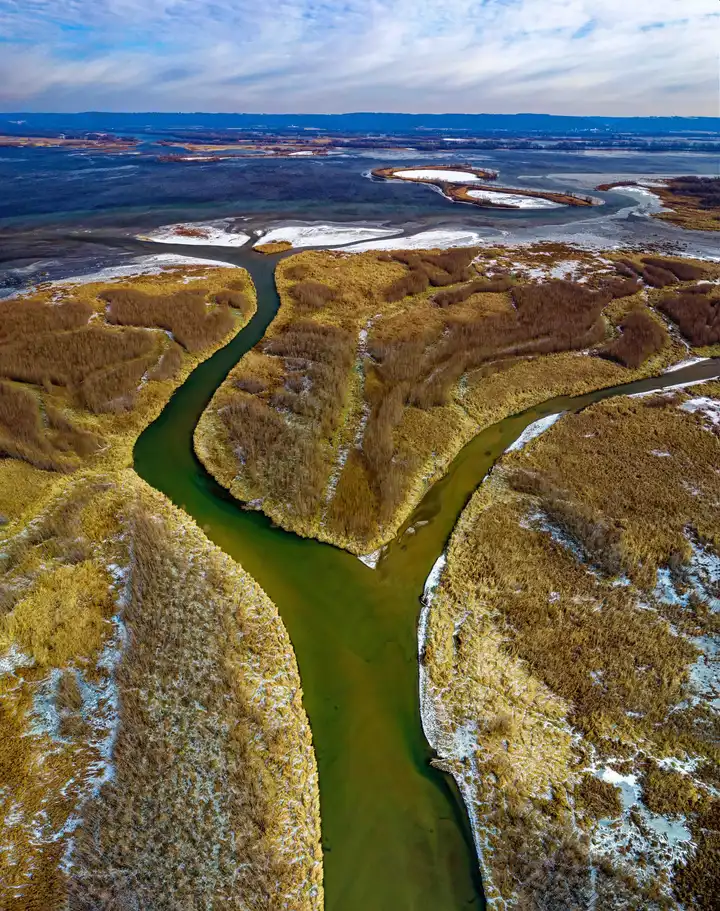
Nestled at the eastern edge of Romania, the Danube Delta stands as a remarkable testament to nature’s resilience and beauty. This UNESCO Biosphere Reserve is a vast and intricate maze of waterways, lakes, marshes, and reed beds, forming one of Europe’s most exceptional and biodiverse ecosystems. The Danube Delta is a sanctuary for an astonishing array of flora and fauna, making it a haven for nature enthusiasts and wildlife lovers.
The delta is formed by the Danube River as it gracefully flows into the Black Sea. It is a haven for over 300 species of birds, including pelicans, herons, and cormorants, making it a paradise for birdwatching enthusiasts. The region is also home to numerous fish species, such as sturgeon and pike, as well as rare mammals like the Eurasian otter and the playful European mink.
Exploring the Danube Delta is a captivating experience. Board a boat or kayak and navigate the labyrinth of channels and lakes, guided by the gentle flow of the river. Allow the pristine beauty of the landscape to unfold before your eyes as you meander through the narrow waterways, surrounded by a symphony of sounds from bird calls and rustling reeds.
As you delve deeper into the delta’s heart, you’ll discover hidden gems such as Letea Forest, a unique area where ancient oak and ash trees intertwine with drifting sand dunes. Here, wild horses roam freely, adding a touch of untamed beauty to the landscape. Another highlight is Caraorman Forest, known for its towering white willow trees, some reaching over 100 years old.
The local communities living in the Danube Delta offer warm hospitality and a glimpse into their traditional way of life. Visit small fishing villages like Crisan or Sulina, where you can savor freshly caught fish and immerse yourself in the local culture. Experience the rhythm of delta life, where fishing and farming are intertwined with the ever-changing flow of the river.
To reach the Danube Delta, the city of Tulcea serves as the gateway. From Tulcea, boat tours and cruises can be arranged to explore the delta’s natural wonders. Local guides provide valuable insights into the region’s ecology and share their knowledge of the diverse wildlife that calls this delta home.
As an ecologically sensitive area, it is crucial to respect and preserve the fragile balance of the Danube Delta. Follow designated paths, adhere to guidelines set by tour operators, and take care not to disturb the wildlife or their habitats.
The Danube Delta offers a unique opportunity to witness the harmonious coexistence of nature and humanity. Its unspoiled landscapes, rich biodiversity, and tranquil ambiance make it a haven for those seeking a closer connection with the natural world. A visit to the Danube Delta is a true immersion into a pristine paradise, where the river’s dance with the sea gives birth to a realm of unrivaled beauty and enchantment.
To explore the Danube Delta, there are no specific entrance tickets required for the natural reserve itself, as it is an open and accessible area. However, there may be costs associated with activities, tours, or transportation within the delta.
8. Salina Turda
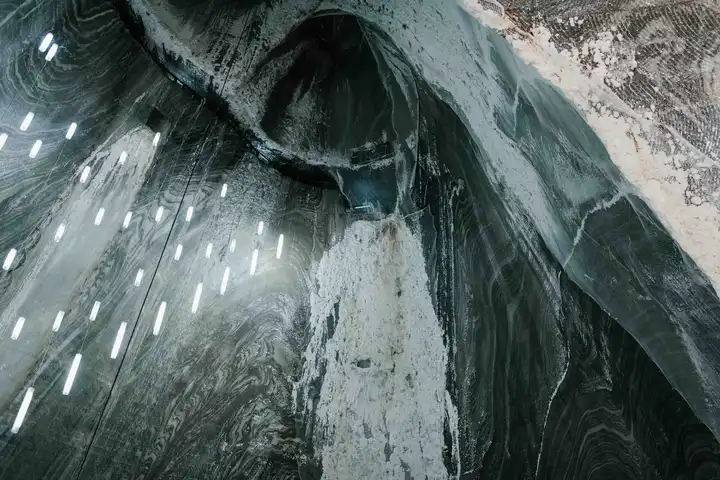
Hidden beneath the rolling hills of Transylvania lies a captivating underground wonderland known as Salina Turda. This unique salt mine turned tourist attraction has become a must-visit destination, offering a surreal experience that combines history, nature, and sheer awe-inspiring beauty.
Salina Turda dates back over 2,000 years, with its mining origins dating to the Roman era. Today, it stands as a testament to the ingenuity and craftsmanship of those who toiled in the depths of the earth. Upon entering the mine, visitors are greeted by an otherworldly sight—a vast chamber adorned with stalactites, stalagmites, and salt-encrusted walls. The sheer scale of the underground cavern is breathtaking, with echoes of the past reverberating through its labyrinthine passages.
As you descend into the mine’s depths, you’ll discover a subterranean realm that has been transformed into a multi-level amusement park of sorts. One of the most mesmerizing sights is the massive Terezia Mine, which houses a surreal underground lake. Boating on its calm waters, surrounded by the mystical ambiance of the cavernous chamber, is an experience that defies description.
Further exploration reveals a variety of attractions, from an amphitheater carved into the salt rock, where concerts and events are held, to whimsical structures like the Ferris wheel and mini-golf courses that add a touch of playfulness to the underground world. A panoramic elevator provides breathtaking views of the entire mine, allowing visitors to truly appreciate the grandeur of Salina Turda.
Aside from its extraordinary beauty, Salina Turda is also recognized for its therapeutic properties. The air within the mine is exceptionally pure and rich in salt particles, creating a unique microclimate that is believed to have numerous health benefits. Visitors can breathe in the invigorating air while strolling through the underground galleries, taking advantage of the purported healing qualities.
To reach Salina Turda, one can take a train or drive to Turda, a town located in the heart of Transylvania. From there, the salt mine is easily accessible, and ample parking is available for those traveling by car. Tickets can be purchased on-site, allowing visitors to explore the underground wonders of Salina Turda at their own pace.
Salina Turda is a testament to the ingenuity of mankind and the stunning beauty that can be found beneath the earth’s surface. It is a place where history, nature, and human imagination intertwine, creating an experience that is nothing short of extraordinary. A visit to Salina Turda is a journey into a subterranean marvel that will leave a lasting impression, forever etching the memory of this enchanting place deep within your soul
Salina Turda’s official website at salinaturda.eu provides additional information regarding ticket prices, opening hours, and any specific guidelines or restrictions that may be in place.
9. Moieciu de Sus
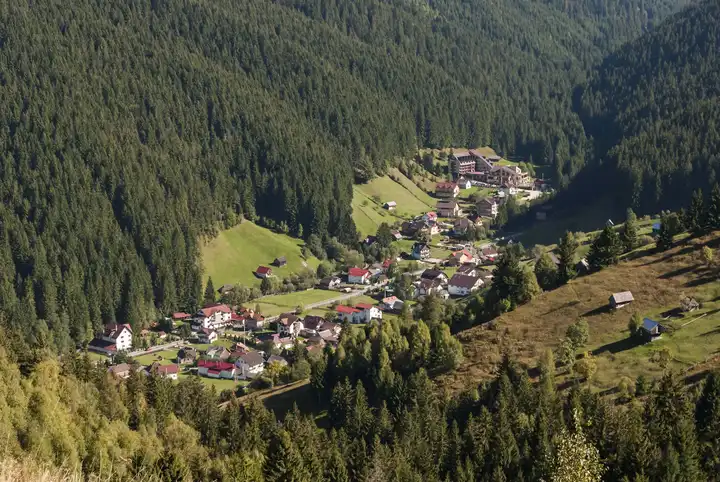
Nestled in the breathtaking landscapes of the Carpathian Mountains, Moeciu de Sus is a tranquil village that offers a serene escape from the bustling world. This picturesque destination in Romania captures the essence of rural beauty, immersing visitors in a world of idyllic landscapes, traditional charm, and warm hospitality.
Moeciu de Sus beckons nature lovers and outdoor enthusiasts with its unspoiled beauty. Surrounded by rolling green hills, dense forests, and crystal-clear streams, the village is a paradise for hikers, bikers, and nature photographers. Explore the scenic trails that wind through the Carpathian Mountains, where breathtaking vistas and encounters with wildlife await at every turn.
The village itself exudes a timeless charm. Traditional houses with colorful facades line the streets, and the gentle sound of cowbells fills the air. Immerse yourself in the local culture and way of life by staying in traditional guesthouses, where warm hosts share stories, serve homemade delicacies, and ensure a cozy and authentic experience.
Moeciu de Sus offers a multitude of activities to suit every taste. In summer, visitors can embark on horseback riding adventures, meandering through meadows and forest paths. Fishing enthusiasts can try their luck in the nearby streams and rivers, while those seeking tranquility can simply relax and rejuvenate amidst the soothing sounds of nature.
As winter blankets the village in a snowy embrace, Moeciu de Sus transforms into a winter wonderland. Skiing and snowboarding enthusiasts can hit the slopes of nearby resorts, while families can enjoy sledding or building snowmen in the meadows. The pristine white landscape adds a touch of magic to the village, inviting visitors to embrace the beauty of the winter season.
To reach Moeciu de Sus, the most convenient option is to rent a car and drive through the scenic mountain roads. The journey itself is a delightful experience, offering panoramic views and glimpses of the authentic countryside. Alternatively, public transportation options are available, including buses and trains that connect Moeciu de Sus to major cities in Romania.
Accommodations in Moeciu de Sus range from traditional guesthouses to cozy mountain lodges, each offering a unique experience immersed in the beauty of the surroundings. Wake up to breathtaking views, savor delicious homemade meals, and unwind in the peaceful ambiance of this rural retreat.
Moeciu de Sus captures the essence of Romania’s countryside, offering a tranquil escape where time seems to stand still. It is a place where nature’s beauty flourishes, where traditional hospitality warms the soul, and where the simple pleasures of life can be fully embraced. A visit to Moeciu de Sus is an invitation to disconnect from the chaos of the modern world and rediscover the joy of simplicity amidst the beauty of nature.
10. The Black Sea Coast
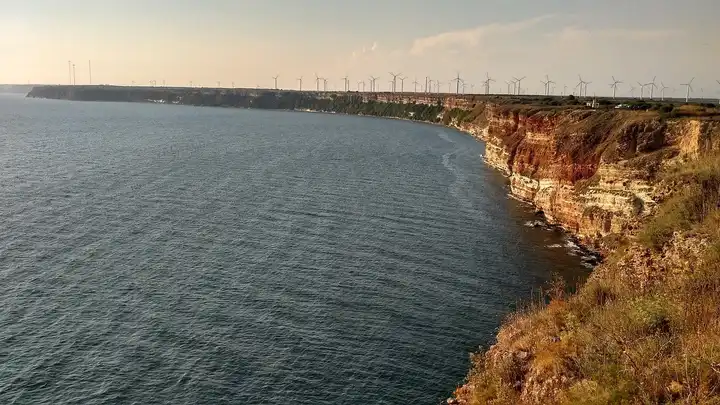
Stretching along Romania’s eastern border, the Black Sea Coast offers a captivating blend of pristine beaches, ancient history, and breathtaking landscapes. This picturesque region is a hidden gem waiting to be explored, offering a diverse range of experiences for nature lovers, history enthusiasts, and beachgoers alike.
The Black Sea Coast boasts a coastline adorned with beautiful sandy beaches, dotted with vibrant beach resorts and charming coastal towns. Whether you’re seeking a lively atmosphere with water sports and entertainment or a secluded spot to unwind, the coast offers a variety of options to suit every preference. From the bustling beaches of Mamaia and Vama Veche to the serene shores of Eforie Nord and Costinesti, there’s a beach for every taste.
Beyond the sandy shores, the Black Sea Coast is steeped in history and cultural heritage. Explore the ancient city of Constanta, home to the impressive Roman Mosaic Edifice and the iconic Great Mosque. Journey back in time at the Archaeological Museum, which showcases artifacts spanning several millennia. Venture to the picturesque town of Mangalia, where you can visit the ruins of Callatis Fortress and unwind in the thermal baths that have attracted visitors for centuries.
Nature enthusiasts will find solace in the stunning landscapes that unfold along the coast. The Danube Delta, a UNESCO World Heritage Site, is a haven for wildlife and birdwatching enthusiasts. Take a boat tour through the intricate network of channels, lakes, and marshes, and witness the abundance of flora and fauna that call this unique ecosystem home.
Throughout the summer, the Black Sea Coast comes alive with festivals and cultural events. Attend music concerts, dance performances, and art exhibitions that showcase the region’s rich cultural heritage. Taste the flavors of the sea with fresh seafood delicacies, accompanied by local wines that complement the coastal ambiance.
Reaching the Black Sea Coast is convenient, with various transportation options available. By air, the Mihail Kogălniceanu International Airport near Constanta serves as a gateway for travelers. Train connections are also available, linking the coast to major cities in Romania.
Accommodations along the Black Sea Coast range from luxurious beachfront resorts to cozy guesthouses and budget-friendly hotels. It is advisable to book in advance, especially during the peak summer season, to secure the best options and rates.
The Black Sea Coast beckons with its sun-kissed beaches, rich history, and captivating natural landscapes. It is a destination that combines relaxation, cultural exploration, and outdoor adventures, offering a unique and unforgettable experience. Whether you seek the allure of ancient civilizations, the tranquility of coastal landscapes, or simply a rejuvenating beach getaway, the Black Sea Coast awaits, ready to weave its magic and create lasting memories.
